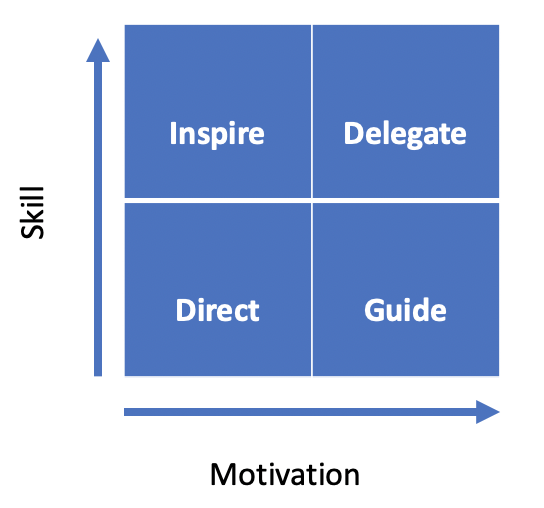Understanding Client’s Skill Level
During the summer of 2004, I was fortunate enough to work for a golf start-up company that traveled around southern Florida helping golfers who were preparing to gain their pro tour card. The focus of our company was to build on their skill and motivation that would take them to the next level of their career. It was a whole-person centered approach by teaching them about strength training, flexibility, nutrition and sport psychology. Taking each individual where there were and understanding where they wanted to go was an important part of what we did. At the time I had never heard of the Skill Motivation Matrix, but certainly applied it to myself and my work unknowingly.
The purpose of the matrix is to help identify ways to manage clients, students, athletes, etc, toward performance success. Skill- an individuals’s capabilities based on their experience, with the task, training, knowledge, and natural ability. Motivation- an individual’s desire to complete a particular task based on attitude, confidence, and feelings about completing a task.
One of the greatest things I enjoy about my job is that each client I work with has different levels of skill and motivation. They have varied movement patterns, agility, and coordination levels and varied levels of what drives them to perform. What I try to do is understand where they are for that particular day because it will have an impact on how we approach the workout for that day.
Let’s take a deeper dive into each of these quadrants.
Direct- Low Skill with Low Motivation. This individual is often introverted and not looking for a cheerleader. It takes time to build a relationship and looking for someone to provide direction.
Guide- High Motivation with Low Skill. This individual is at risk for doing it all at once which is dangerous for long-term success. They need structure and pace, leading step by step.
Inspire- Low Motivation with High Skill. This individual often wants to be good but often feels overwhelmed with internal and external pressure, which can be a challenge to coach. As a trainer/coach, it is important to find subtle ways to inspire this person.
Delegate- High Motivation with High Skill. This individual is very good at everything and motivated to get better. Giving them autonomy in researching or problem solving will keep them engaged.
One truth is that an individual can fall into one quadrant for a particular movement or exercise such as kettlebell swings and another quadrant for an agility ladder drill. And one’s experience may shift over time as they become more familiar with movement patterns and motivational levels adjust as goals are met.
Knowing your skill and motivation levels will help trainers and coaches build the right individual program for you.
be well-

